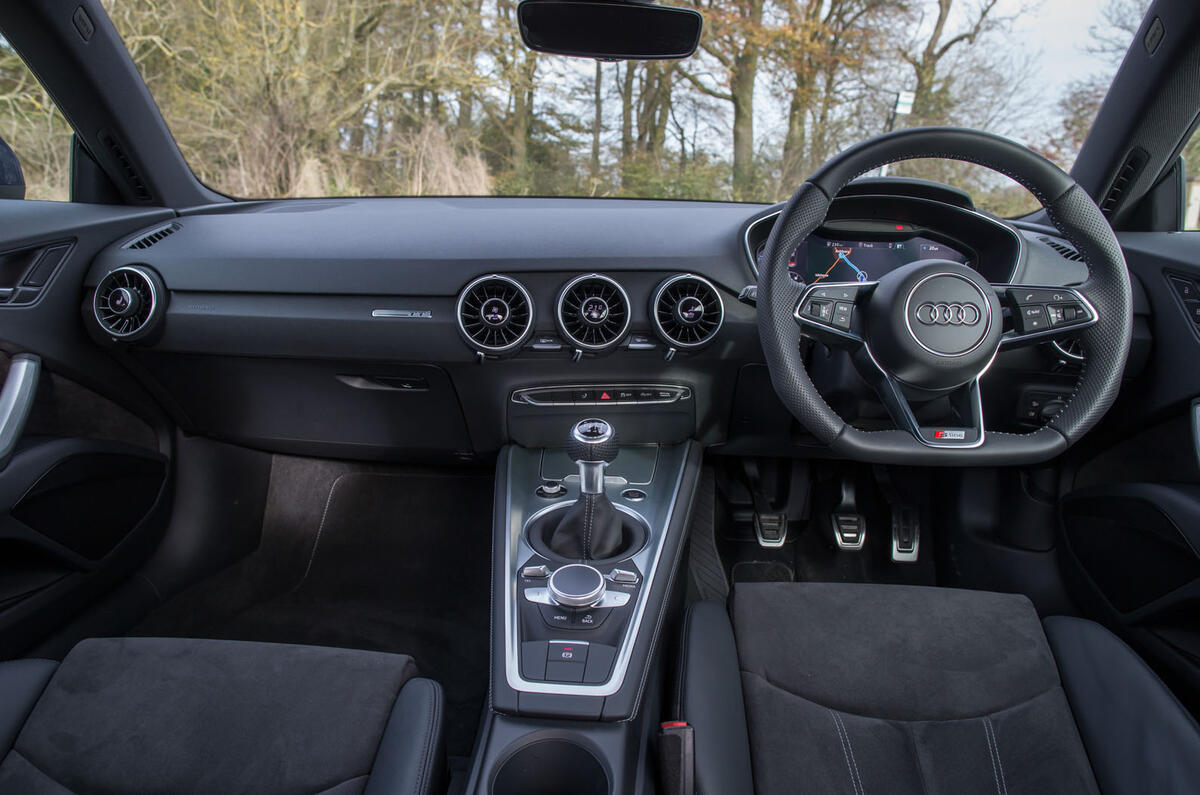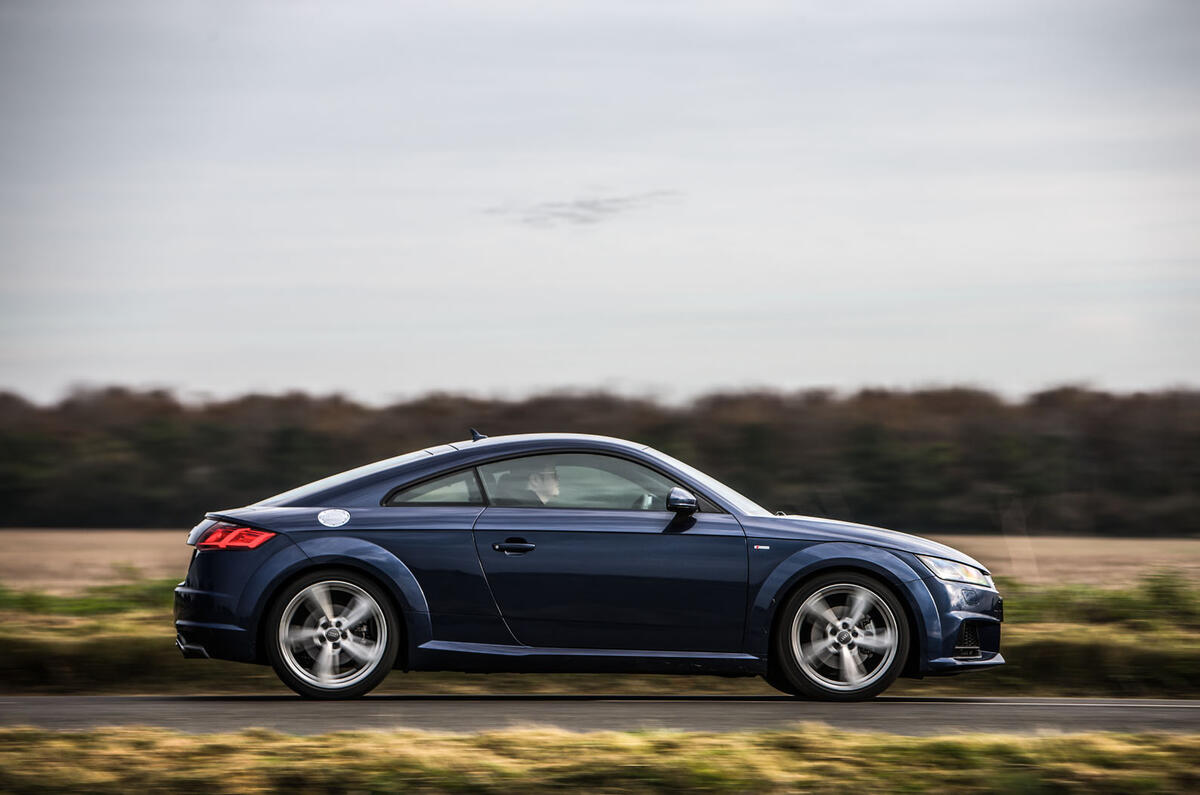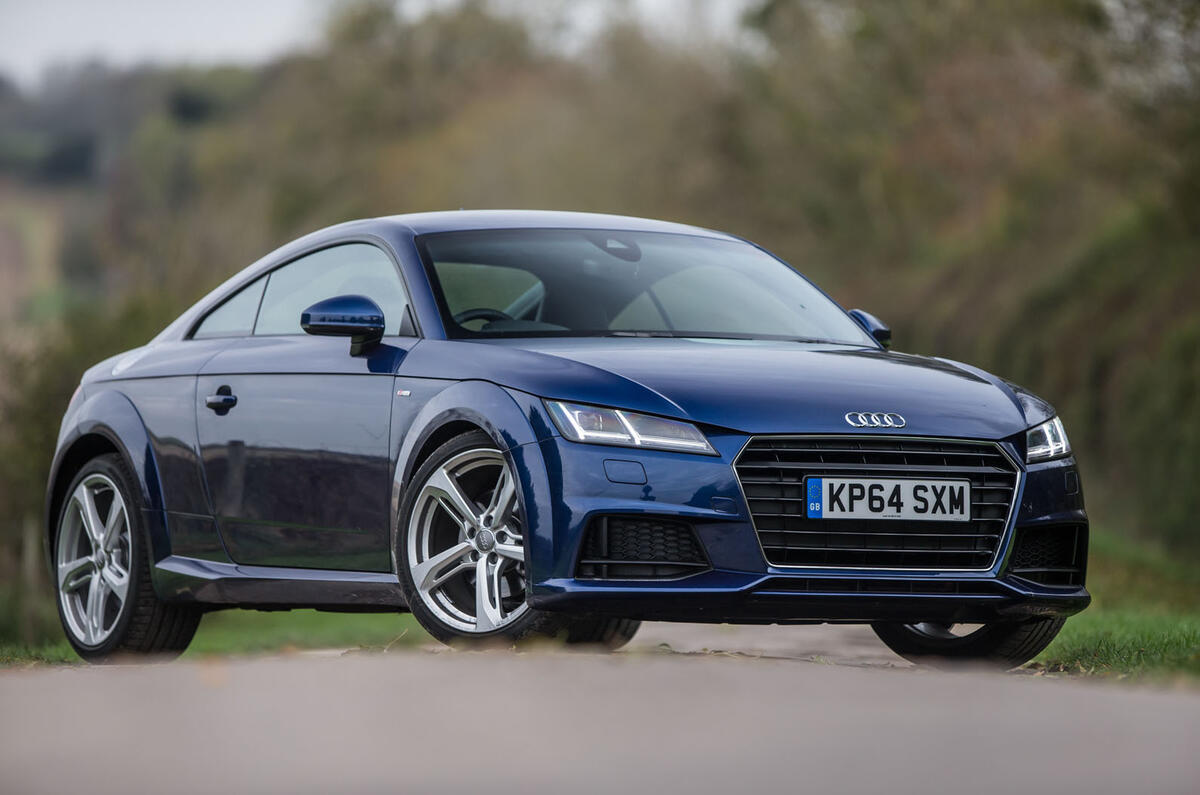It’s okay to feel conflicted about the prospect of a new Audi TT. We do. The first generation Audi coupe landed in 1998 as a prefab classic sporting a visually striking closed clamshell of a body that was about to chime oh so perfectly with the Apple-led age of sleek product design.
Unlike the first iPod, however, Audi didn’t spend quite so much time plumbing functional pleasure into the experience. Instead, Peter Schreyer’s modernistic sculpture was plonked onto the Volkswagen Group’s PQ34 platform, a front and four-wheel-drive architecture shared with scintillating options such as the VW Bora and Seat Toledo.
Consequently, while the TT may have always looked like a hot ticket to excitement, its uncanny dynamic impression of a small four-door saloon has done little to set a keen driver’s imagination alight.
The latest TT’s migration to the MQB platform may not seem like a reason for jubilation, but Audi’s early rhetoric suggests that fun has now been placed closer to centre stage, underpinned by less weight, a new and adaptive chassis and more power. Later this year, the range will be complete as the bombastic Audi TT RS will join the other incumbants in the range.
Could this be the TT we recommend unconditionally? Let’s see.
Audi TT design & styling
It has taken just 16 years for the TT to attain the design icon status that the likes of the Porsche 911, Mercedes-Benz SL and Volkswagen Golf took two or three times longer to achieve.














































